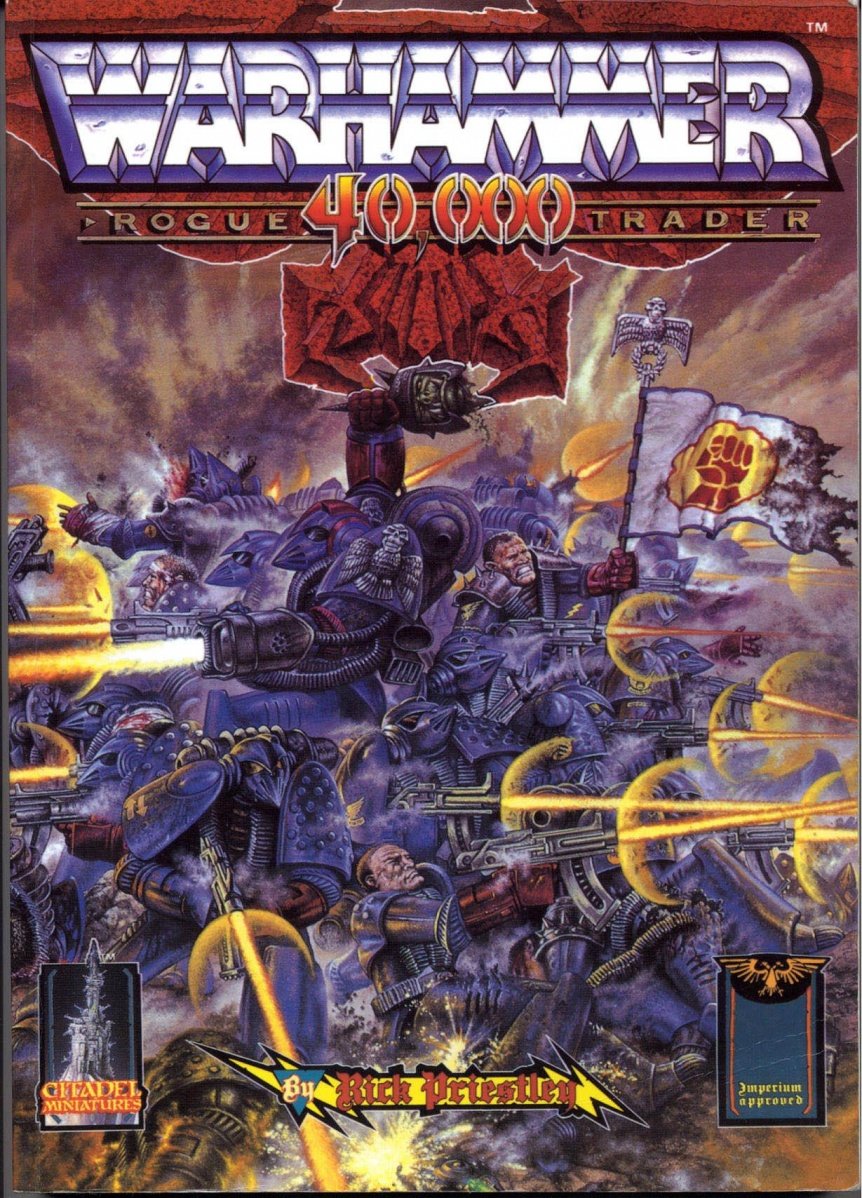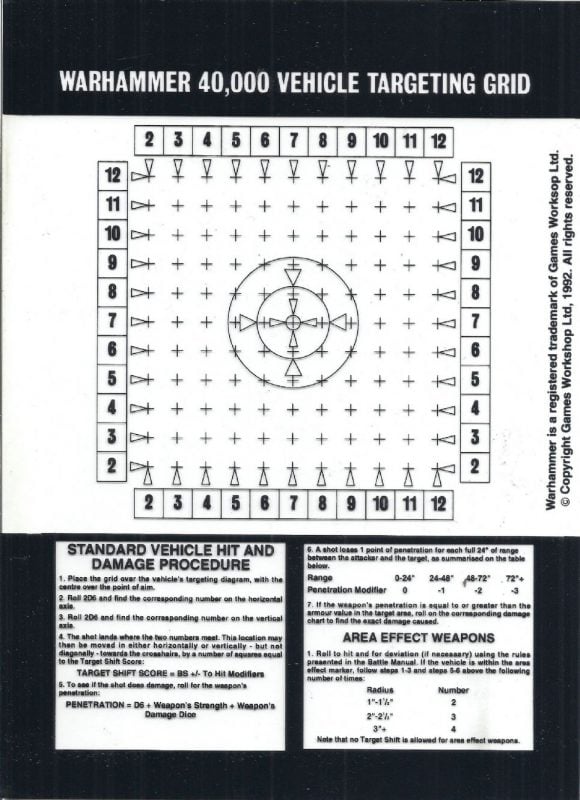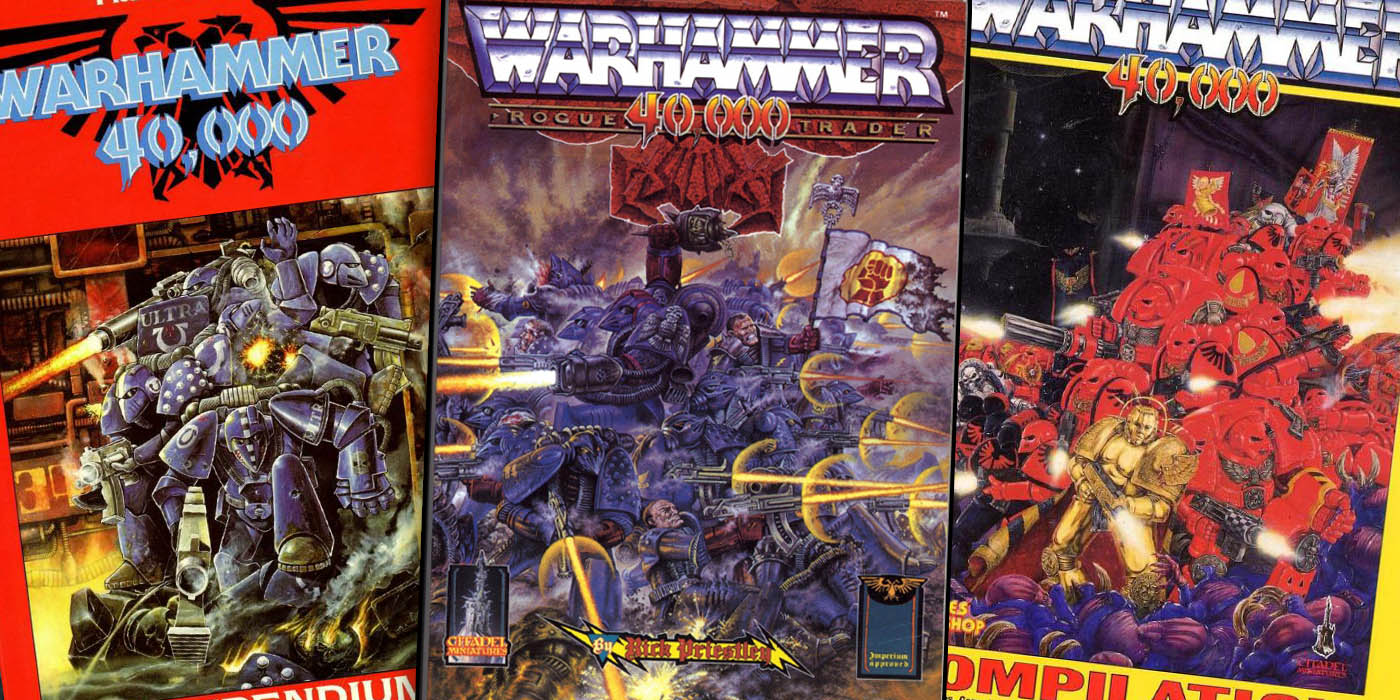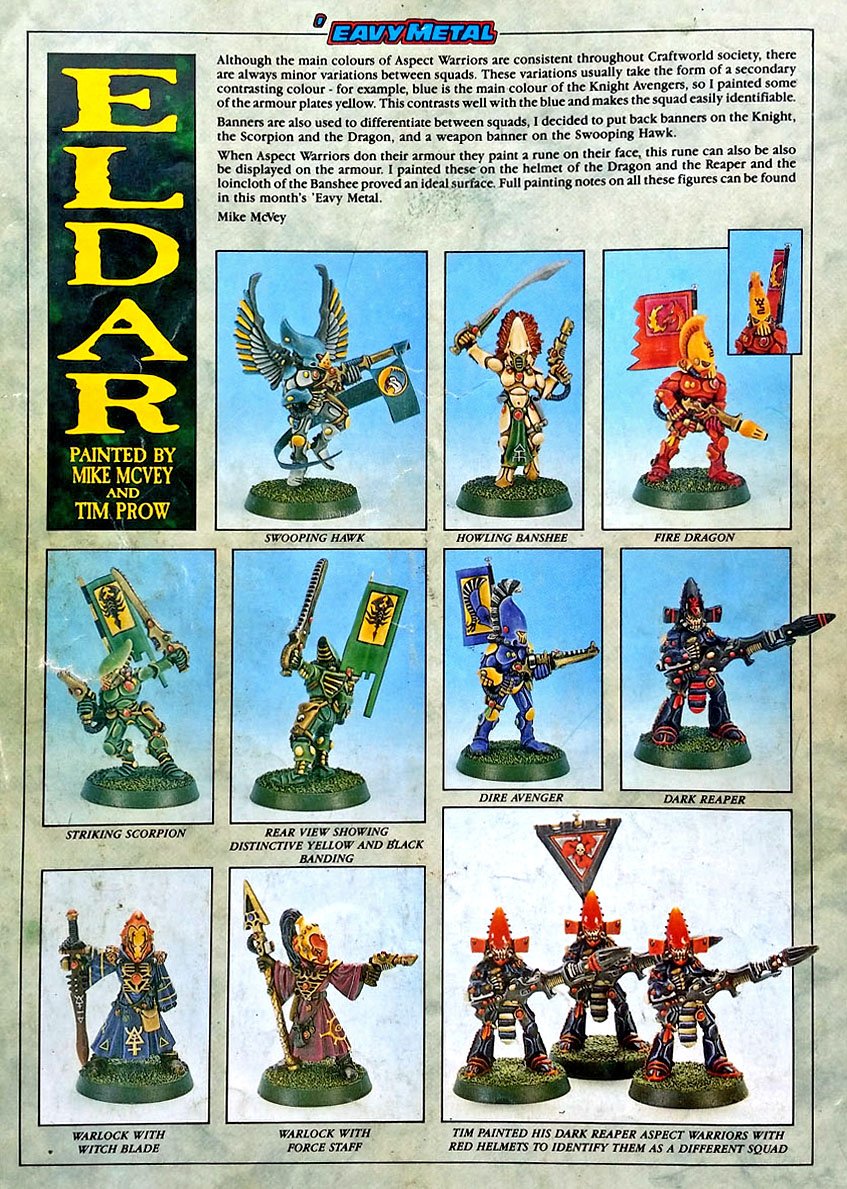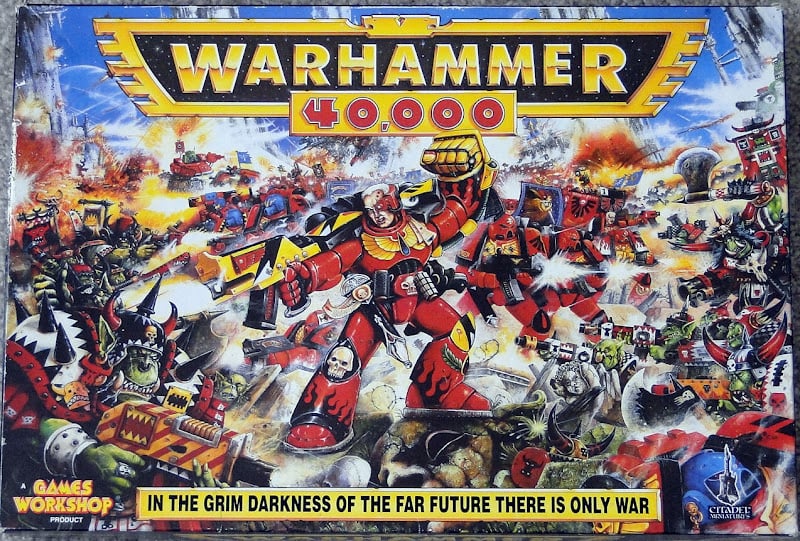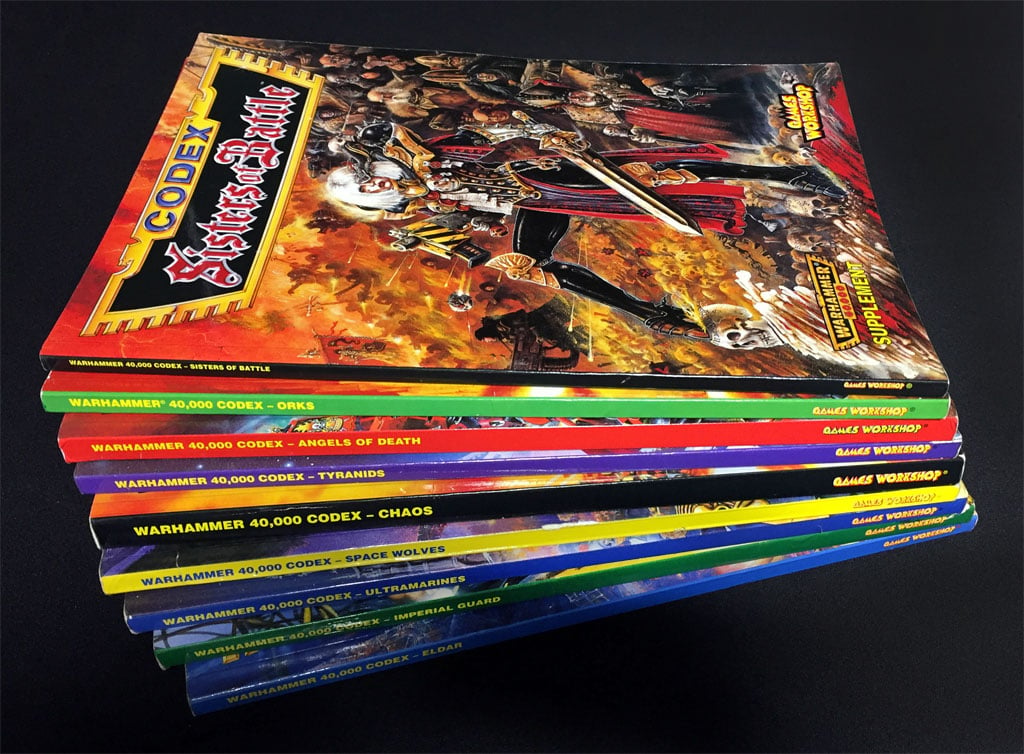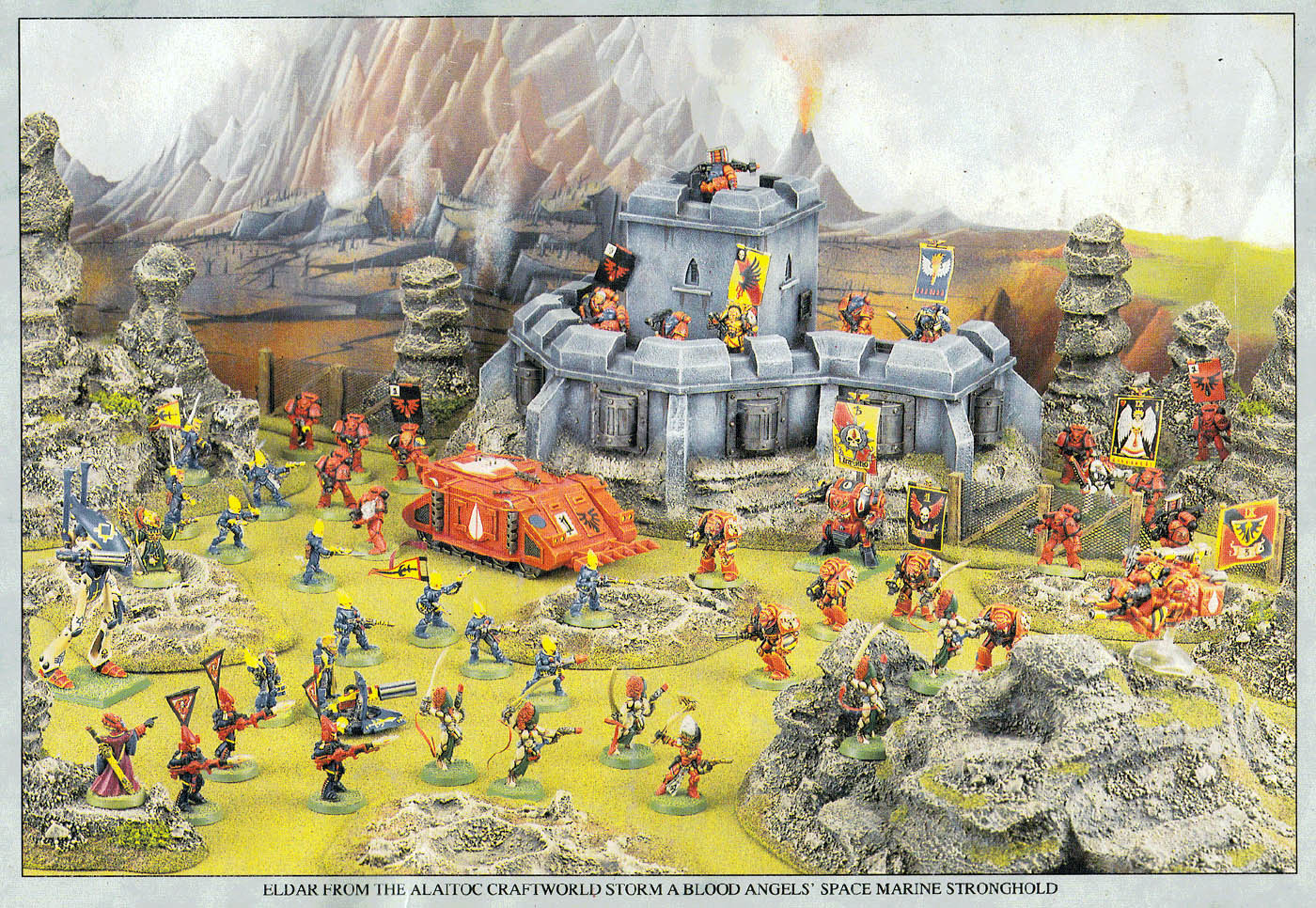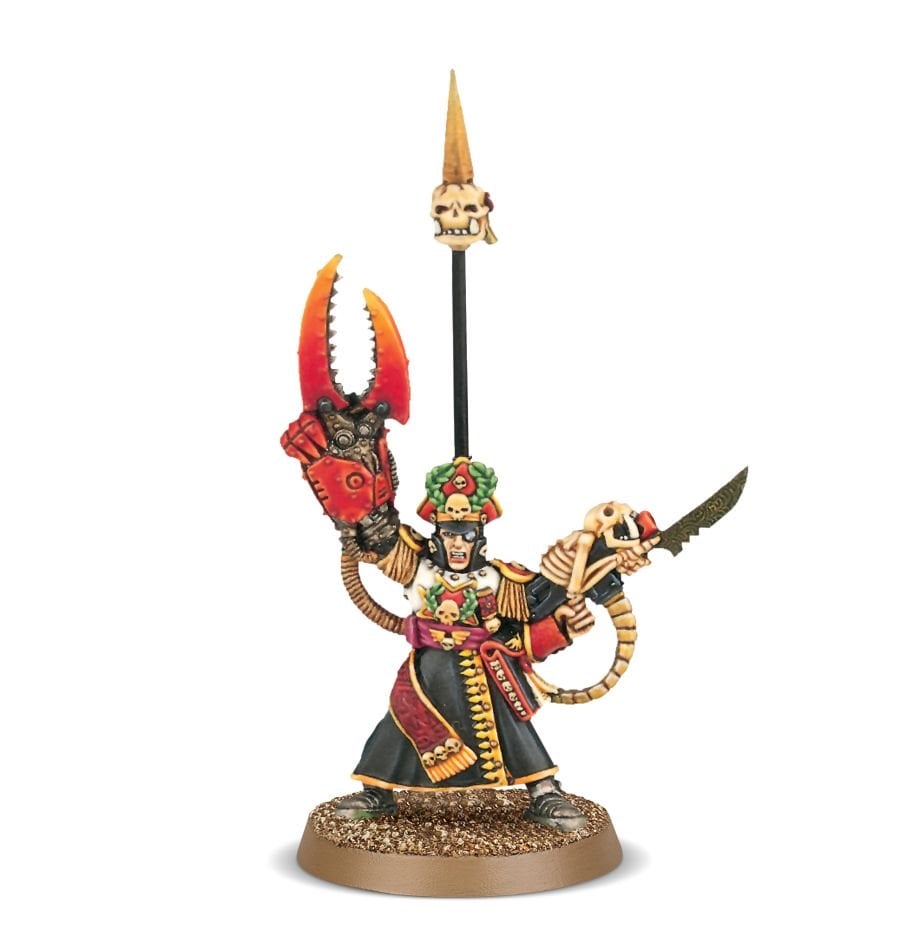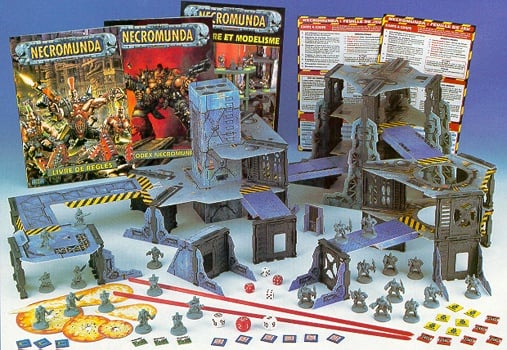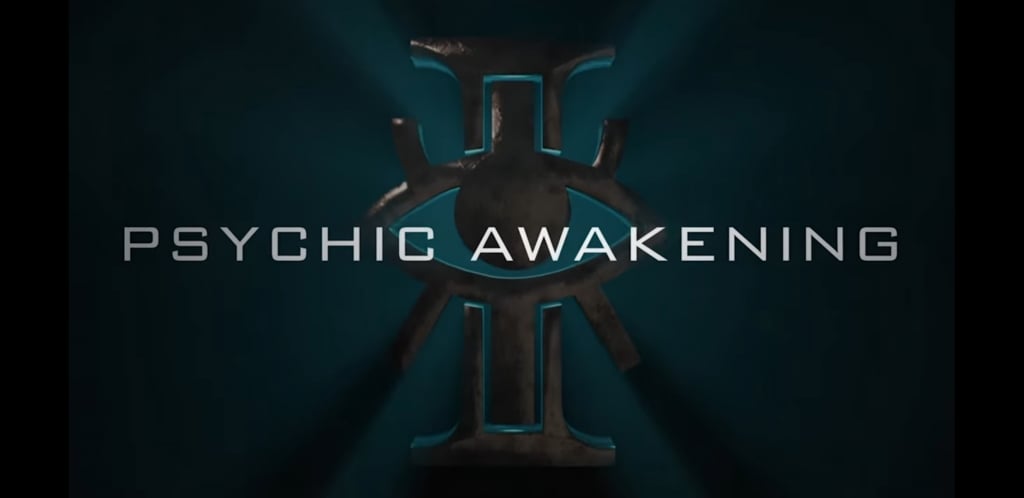Warhammer 40K: A History of Editions – 1st & 2nd Edition
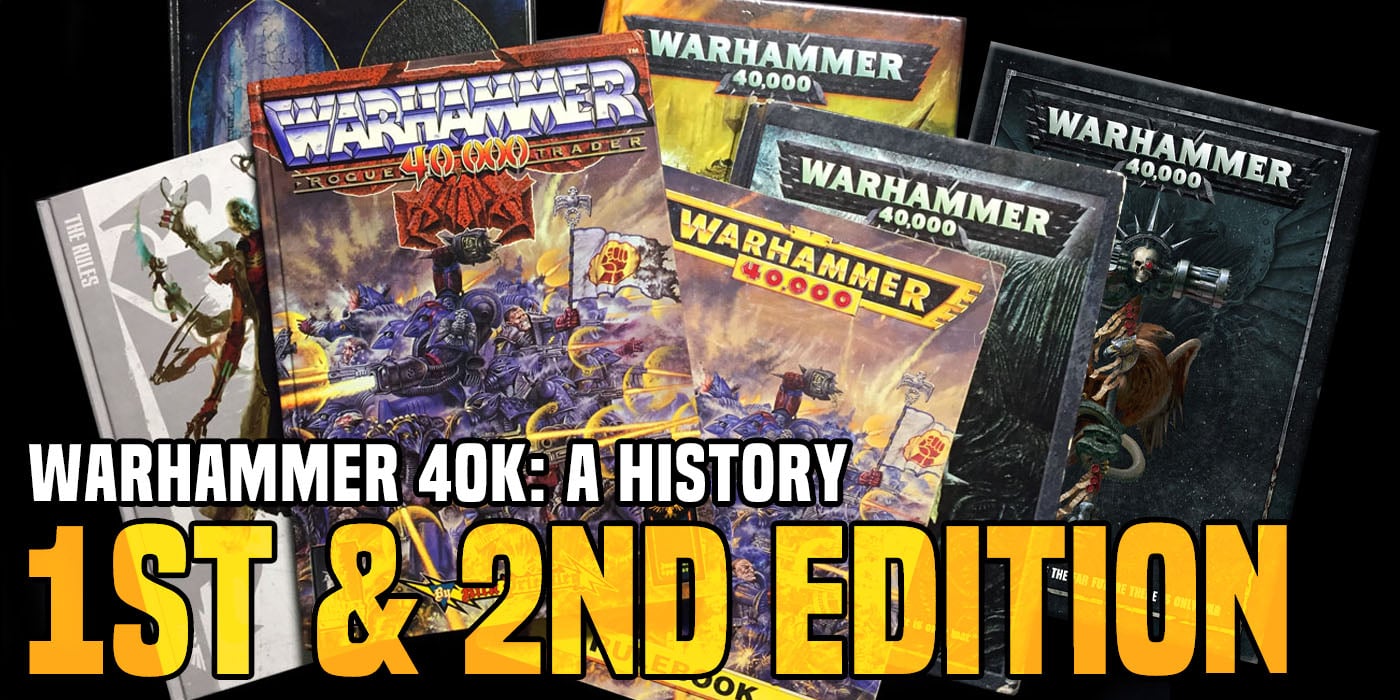

Come Grimdark enthusiasts as we cover the history and review of every edition of 40k. Today we look at 1st and 2nd Editions.
A guest series by Karru
Hello readers, I am here to talk about the editions of 40k in a series of articles, talking about their strengths and weakness, legacy to later editions and more memorable features of each. In this first article I will be focusing on Rogue Trader and 2nd Edition.
Rogue Trader (1987 – 1993)
Rogue Trader was the first edition of 40k, however to many veteran players out there, Rogue Trader was always considered to be its own game while 2nd edition was the “true” first edition of Warhammer 40.000. It is not a completely out of nothing notion, as Rogue Trader was a rather strange hybrid between a tabletop game and a role-playing game, focusing less on battles between armies and more on individuals.
Remember the Glory, the Charts and the Game Master
Rogue Trader remains as one of the most memorable eras for many veterans. Ranging from its brightly coloured armies to the wacky events that could happen, the most memorable sight for many undoubtedly are the charts, but what some people might not know or remember is that the game actually “required” to have a GM with you. Indeed, games were played between two or more players like in the current day, however there was also a third player as well who was the game master for the game. Rogue Trader was not about adventures and levelling up characters however, there was simply so much bookkeeping in the game that the game in a way required to have a GM.
The Good and the Bad
Rogue Trader was an exceptionally open system. You could mix factions, create vehicles and walkers from nothing, equip your units almost however you desired and pull fancy tricks during the games. There was also a great deal of focus on every faction. While later editions, mainly 3rd edition onwards, started to focus more and more on Imperium, Rogue Trader tried to be as inclusive about its options. This was also during the wild times of Games Workshop as it saw the creation of Zoats, Squats and Slann for example, however a great deal of familiar faces could also be seen, such as Eldar, Orks and Space Marines (including many Chapters such as Dark Angels and Blood Angels) as well as the Inquisition!
However, it is not all flawless rules and flashy lights, the rules were about as welcoming as a cold shower. The charts were just one thing, but the amount of things players had to keep track off were through the roof and well beyond. Those of you who have played Pen & Paper role-playing games before can easily imagine how fun and welcoming it can be to track 20+ “individuals” and move them about. Falling, climbing, moving through rough terrain, getting hit, shooting, you had to track all of it for every individual model. Walkers had different hit locations and charts to see how the hit affected the Walker, Vehicles had their own charts and so on, you also had to note your equipment, encumbrance and its effects on the model’s movement, amongst many other rules.
2nd Edition (1993 – 1998)
Rogue Trader made way to 2nd edition of Warhammer 40.000 in 1993 and it was the first stone in the foundation to the modern editions. Learning from the mistakes of Rogue Trader, 2nd edition tried to be more welcoming and streamlined. The edition moved from a role-playing game to a more traditional tabletop game, removing much of its bookkeeping in the process. While still not recognisable in scale of sheer number of minis used in an average army, by many players today, it was slowly coming together.
The Future of Warhammer
Where Rogue Trader remains the most memorable to veterans, to many modern gamers it is 2nd edition that they usually link the past to, mainly the brightly coloured armies fighting each other. If anything, players will recognise the glorious Limo from this era as it was 2nd edition that first gave us Genestealer Cults as an army. 2nd edition also introduced the concept of Codices, as during Rogue Trader most armies were piled into compendiums, expanding the lore of 40k in more detail and giving factions more things to do and play with. 2nd edition did come with a compendiums as well initially, but they were expanded upon with the codices later into the edition.
It Was the Best of Times, It Was the Worst of Times
The game itself was now in much better spot in terms of ease of access than what Rogue Trader was, the system utilised the same combat rules as those found in Necromunda later on, which, while complex, reduced much of the clutter of the earlier edition. Amongst a few notable features of this edition was the uniformity of everything. While Codices were introduced, everyone still used the same weapons even if they looked different on the model itself. A Heavy Plasma Gun wasn’t named differently for the Eldar as an example.
However, 2nd edition was the pinnacle of HeroHammer, the dreaded age of demi-god characters walking the battlefield, winning battles almost in their lonesome. While Rogue Trader also had this going for it as well, it reached new heights during 2nd edition. The other issue was still the same that Rogue Trader faced, the rules were simply still too complex for mainstream gaming, meaning that it still had rather high barrier of entry to get over. While armies were now bigger than Rogue Trader, you were still looking at individual models for everything, slowing the game down significantly.
The Legacy Lives On
In the modern day, much of Rogue Trader and 2nd edition’s rules have faded away, however as was mentioned, the original Necromunda was based on the system, but also many of the exotic races from this period are making their return. Shadow War Armageddon was also heavily based on 2nd edition, few other rules made their return in various books, such as the dreaded Vortex Grenade in Apocalypse. Models that existed during this time are making their way back, such as the Zoat and Ambull in Blackstone Fortress, or Makari the Grot in 40k!
Let us know how you feel about the edition as a whole in the comments.

